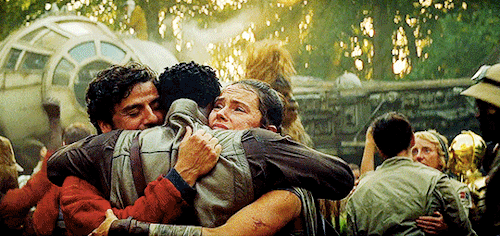Are You Still Stuck For Ideas For National Novel Writing Month? Or Are You Working On A Novel At A More
Are you still stuck for ideas for National Novel Writing Month? Or are you working on a novel at a more leisurely pace? Here are 102 resources on Character, Point of View, Dialogue, Plot, Conflict, Structure, Outlining, Setting, and World Building, plus some links to generate Ideas and Inspiration.
CHARACTER, POINT OF VIEW, DIALOGUE
10 Days of Character Building
Name Generators
Name Playground
The Universal Mary Sue Litmus Test
Priming the idea pump (A character checklist shamlessly lifted from acting)
How to Create a Character
Seven Common Character Types
Handling a Cast of Thousands – Part I: Getting to Know Your Characters
It’s Not What They Say . . .
Establishing the Right Point of View: How to Avoid “Stepping Out of Character”
How to Start Writing in the Third Person
Web Resources for Developing Characters
What are the Sixteen Master Archetypes?
Character: A compilation of guidance from classical and contemporary experts on creating great dramatic characters
Building Fictional Characters
Fiction Writer’s Character Chart
Character Building Workshop
Tips for Characterization
Fiction Writer’s Character Chart
Villains are People, Too, But . . .
Top 10 Tips for Writing Dialogue
Speaking of Dialogue
Dialogue Tips
Advantages, Disadvantages and Skills (character traits)
How to Write a Character Bible
Character Development Exercises
All Your Characters Sounds the Same — And They’re Not a Hivemind!
Medieval Names Archive
Sympathy Without Saintliness
Writing the Other: Bridging Cultural Difference for Successful Fiction
Family Echo (family tree website)
Interviewing Characters: Follow the Energy
100 Character Development Questions for Writers
Behind the Name
Lineage Chart Layout Generator
PLOT, CONFLICT, STRUCTURE, OUTLINE
How to Write a Novel: The Snowflake Method
Effectively Outlining Your Plot
Conflict and Character within Story Structure
Outlining Your Plot
Ideas, Plots & Using the Premise Sheets
How to Write a Novel
Creating Conflict and Sustaining Suspense
Plunge Right In . . . Into Your Story, That Is!
Fiction Writing Tips: Story Grid
Tips for Creating a Compelling Plot
Writer’s “Cheat Sheets”
The Thirty-six (plus one) Dramatic Situations
The Evil Overlord Devises a Plot: Excerpt from Stupid Plotting Tricks
Conflict Test
What is Conflict?
Monomyth
The Hero’s Journey: Summary of the Steps
Outline Your Novel in Thirty Minutes
Plotting Without Fears
Novel Outlining 101
Writing the Perfect Scene
Fight Scenes 101
Basic Plots in Literature
One-Page Plotting
The Great Swampy Middle
SETTING, WORLD BUILDING
Magical World Builder’s Guide
I Love the End of the World
World Building 101
The Art of Description: Eight Tips to Help You Bring Your Settings to Life
Creating the Perfect Setting – Part I
Creating a Believable World
An Impatient Writer’s Approach to Worldbuilding
Fantasy Worldbuilding Questions
Setting
Character and Setting Interactions
Creating Fantasy and Science Fiction Worlds
Creating Fantasy Worlds
Questions About Worldbuilding
Maps Workshop — Developing the Fictional World Through Mapping
World Builder Projects
IDEAS, INSPIRATION
Quick Story Idea Generator
Solve Your Problems Simply by Saying Them Out Loud
Busting Your Writing Rut
Writing Inspiration, or Sex on a Bicycle
Creative Acceleration: 11 Tips to Engineer a Productive Flow
The Seven Major Beginner Mistakes
Complete Your First Book with these 9 Simple Writing Habits
Free Association, Active Imagination, Twilight Imaging
Random Book Title Generator
Finishing Your Novel
Story Starters and Idea Generators
REVISION
How to Rewrite
One-Pass Manuscript Revision: From First Draft to Last in One Cycle
Editing Recipe
Cliche Finder
Revising Your Novel: Read What You’ve Written
Writing 101: So You Want to Write a Novel Part 3: Revising a Novel
TOOLS and SOFTWARE
My Writing Nook (online text editor; free)
Bubbl.us (online mind map application; free)
Freemind (mind map application; free; Windows, Mac, Linux, portable)
XMind (mind map application; free; Windows, Mac, Linux, portable)
Liquid Story Binder (novel organization and writing software; free trial, $45.95; Windows, portable)
Scrivener (novel organization and writing software; free trial, $39.95; Mac)
SuperNotecard (novel organization and writing software; free trial, $29; Windows, Mac, Linux, portable)
yWriter (novel organization and writing software; free; Windows, Linux, portable)
JDarkRoom (minimalist text editor; free; Windows, Mac, Linux, portable)
AutoRealm (map creation software; free; Windows, Linux with Wine)
More Posts from Lune-versatile and Others
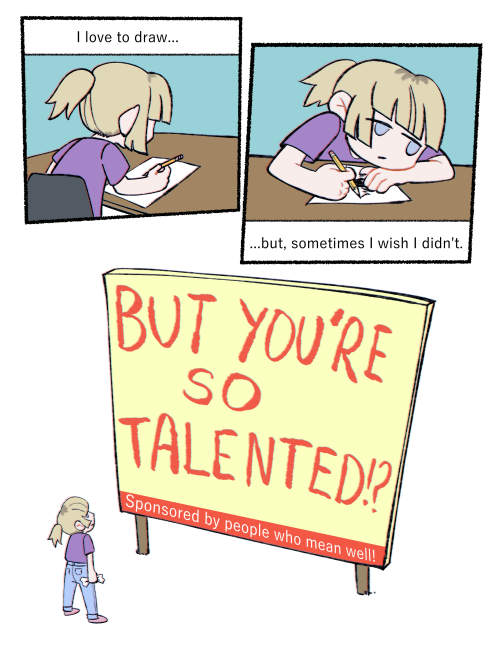
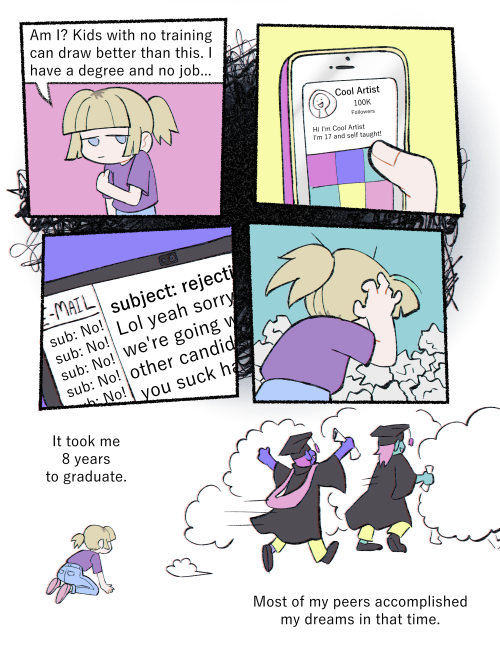

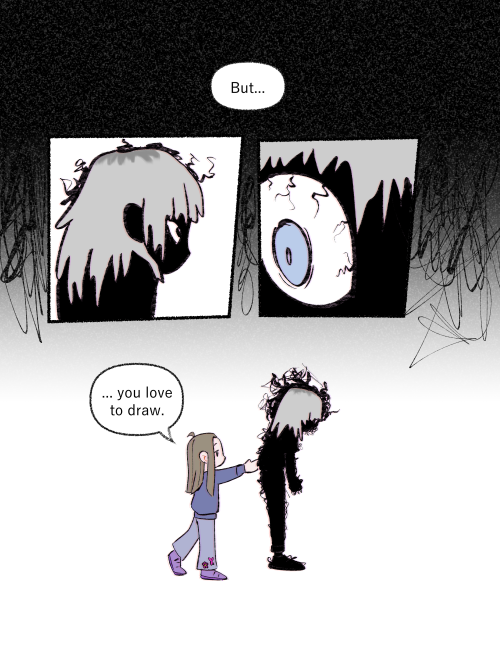
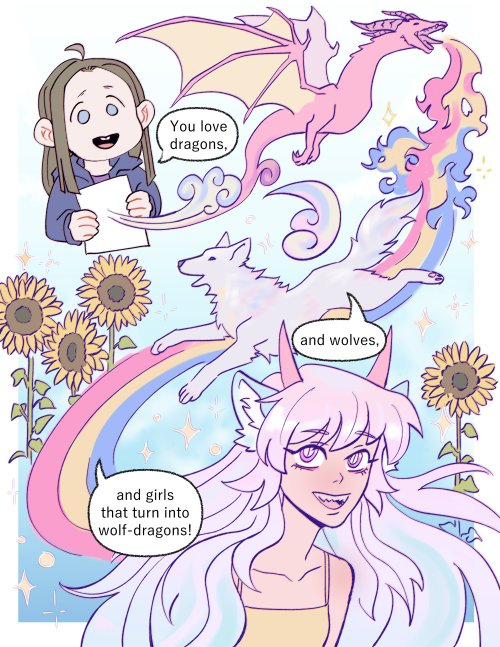
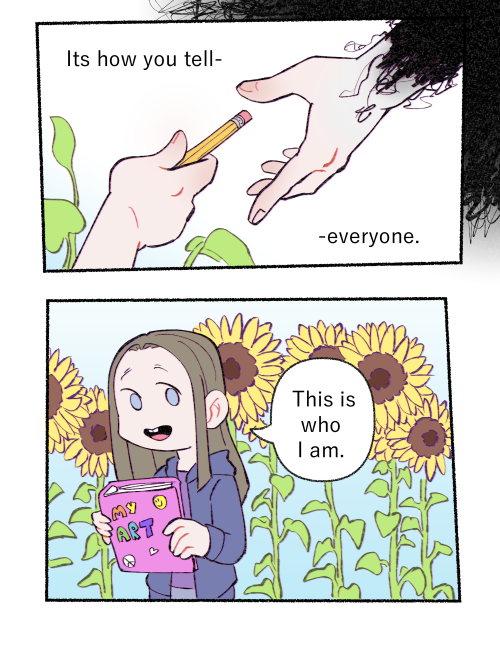

A comic to try and sort through some difficult feelings about being an artist and a reminder to not forget who you are.
Heres a google drive folder filled with art book pdfs, if anyone has some others that you'd like me to add to it thats missing, please let me know and send me the link
The First Thing You Learn in University Creative Writing Classes
I was very fortunate to major in Creative Writing when I went to college. It was a great experience, but I remember being so nervous when I walked into my first class as a freshman.
I'd been writing stories since elementary school, so I worried that this first class would teach me something wildly different than what I knew about writing. Maybe there was some secret formula to creating characters or mental exercises that immediately dissolved writer's block that you could only learn from a professor.
When my first class ended, I was shocked.
The first thing you learn in a university-level creative writing class?
Read more than you write.
It's that simple. I thought my professor had lost his mind, but the many others that followed always echoed the advice.
The advice then saved my ability to write when I was getting through each day during some of the hardest times of my life.
Pick up the good books. The great books. The terrible books that make you quit reading them because they're so bad.
They will all make your writing stronger.
You'll learn how to write fantastic characters, weave plot lines, and paint worlds with words. You'll also learn what you don't like in someone's writing so you can avoid it in your own.
Even during the periods when I wrote nothing at all, reading kept that love for writing alive in my heart.
It's the best way to reconnect with that passion if you've lost it and the greatest way to develop that skill.
Read more than you write.
Your storylines and characters will thank you later.

Tips for writing an essay with executive dysfunction: do this.
Write out bits and pieces of the essay. When you get to a part you can’t/”don’t want to” write, put it in bold brackets. Get as much done as you can and come back in a half an hour or so!
If the executive function is still bothering you, take it one bracket at a time. Don’t delete the bracket until you’re done “filling it in,” so to speak. If you need to take more breaks or hop to the next bracket, you can do that too! Similarly, if you have a thought you want to get down but you aren’t sure how to word it, put it in bold brackets as well!
It may not “cure” the executive dysfunction or procrastination problems, but it makes writing the essay more like putting shapes in holes of the same shape. It can be a pain, but the process is a bit more streamlined and user-friendly.
I know this may not work for everyone, but as someone who has really bad executive dysfunction and problems focusing (thank you, ADHD!) this works REALLY well for me! I hope by sharing it it can help other people (with and without executive dysfunction/adhd) too! o/
In 2006 a high school English teacher asked students to write a famous author and ask for advice. Kurt Vonnegut was the only one to respond - and his response is magnificent: “Dear Xavier High School, and Ms. Lockwood, and Messrs Perin, McFeely, Batten, Maurer and Congiusta:
I thank you for your friendly letters. You sure know how to cheer up a really old geezer (84) in his sunset years. I don’t make public appearances any more because I now resemble nothing so much as an iguana.
What I had to say to you, moreover, would not take long, to wit: Practice any art, music, singing, dancing, acting, drawing, painting, sculpting, poetry, fiction, essays, reportage, no matter how well or badly, not to get money and fame, but to experience becoming, to find out what’s inside you, to make your soul grow.
Seriously! I mean starting right now, do art and do it for the rest of your lives. Draw a funny or nice picture of Ms. Lockwood, and give it to her. Dance home after school, and sing in the shower and on and on. Make a face in your mashed potatoes. Pretend you’re Count Dracula.
Here’s an assignment for tonight, and I hope Ms. Lockwood will flunk you if you don’t do it: Write a six line poem, about anything, but rhymed. No fair tennis without a net. Make it as good as you possibly can. But don’t tell anybody what you’re doing. Don’t show it or recite it to anybody, not even your girlfriend or parents or whatever, or Ms. Lockwood. OK?
Tear it up into teeny-weeny pieces, and discard them into widely separated trash recepticals. You will find that you have already been gloriously rewarded for your poem. You have experienced becoming, learned a lot more about what’s inside you, and you have made your soul grow.
God bless you all!
Kurt Vonnegut
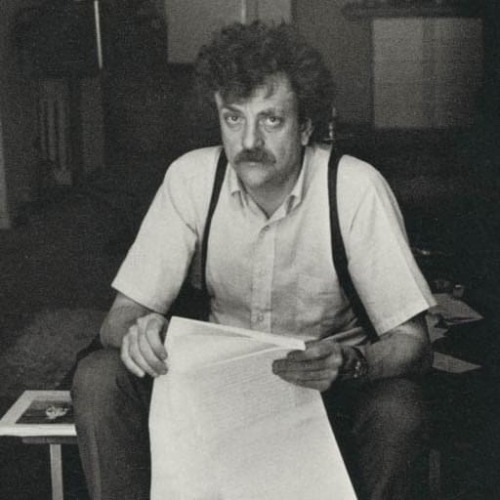
Nimbus Publishing and Vagrant Press Goose Lane Editions Breakwater Books Ltd. The Acorn Press Bouton d'or Acadie Canada Council for the Arts | Conseil des arts du Canada
HOW TO GIVE PERSONALITY TO A CHARACTER
Giving personality to a character is an essential part of character development in storytelling, whether you're writing a novel, screenplay, or creating a character for a role-playing game. Here are some steps and considerations to help you give personality to your character:
Understand Their Backstory:
Start by creating a detailed backstory for your character. Where were they born? What were their childhood experiences like? What significant events have shaped their life? Understanding their past can help you determine their motivations, fears, and desires.
2. Define Their Goals and Motivations:
Characters often become more interesting when they have clear goals and motivations. What does your character want? It could be something tangible like a job or a romantic relationship, or it could be an abstract desire like happiness or freedom.
3. Determine Their Strengths and Weaknesses:
No one is perfect, and characters should reflect this. Identify your character's strengths and weaknesses. This can include physical abilities, intellectual skills, and personality traits. Flaws can make characters relatable and three-dimensional.
4. Consider Their Personality Traits:
Think about your character's personality traits. Are they introverted or extroverted? Shy or outgoing? Kind or selfish? Create a list of traits that describe their character. You can use personality frameworks like the Myers-Briggs Type Indicator or the Big Five Personality Traits as a starting point.
5. Give Them Quirks and Habits:
Quirks and habits can make a character memorable. Do they have a specific way of speaking, a unique fashion style, or an unusual hobby? These details can help bring your character to life.
6. Explore Their Relationships:
Characters don't exist in isolation. Consider how your character interacts with others. What are their relationships like with family, friends, and enemies? These relationships can reveal a lot about their personality.
7. Show, Don't Tell:
Instead of explicitly telling the audience about your character's personality, show it through their actions, dialogue, and decisions. Let the reader or viewer infer their traits based on their behavior.
8. Create Internal Conflict:
Characters with internal conflicts are often more engaging. What inner struggles does your character face? These can be related to their goals, values, or past experiences.
9. Use Character Arcs:
Consider how your character will change or grow throughout the story. Character development is often about how a character evolves in response to the events and challenges they face.
10. Seek Inspiration:
Draw inspiration from real people, other fictional characters, or even historical figures. Study how people with similar traits and backgrounds behave to inform your character's actions and reactions.
11. Write Dialogue and Inner Monologues:
Writing dialogue and inner monologues from your character's perspective can help you get inside their head and understand their thought processes and emotions.
12. Consider the Setting:
The setting of your story can influence your character's personality. For example, a character who grows up in a war-torn environment may have a different personality than one raised in a peaceful, affluent society.
13. Revise and Refine:
Don't be afraid to revise and refine your character as you write and develop your story. Characters can evolve and change as the narrative unfolds.
Remember that well-developed characters are dynamic and multi-faceted. They should feel like real people with strengths, weaknesses, and complexities. As you write and develop your character, put yourself in their shoes and think about how they would react to various situations. This will help you create a compelling and believable personality for your character.
On creating a wiki for your worldbuilding
Do you have a lot of lore to keep track of? Whether you're an author, a Game Master, or simply someone who really really likes worldbuilding, this post is for you.
Here's a quick overview of what I'll be talking about:
Platforms people use to create personal wikis
Formats and organization systems you may find useful when creating your own wiki
A brief look at the actual content you might put in your wiki (I'm planning a more in-depth post on that later with more images and demos)
And because this is gonna be a long'un, I'm putting a read-more here! I'll also make downloadable epub and PDF versions of this post available for free on my Ko-Fi at some point in the future.
(I'm also planning to reblog with a list of links later on, but I want this initial post shows up in search)
Also now that you're here, I'm going to say this isn't, like, super comprehensive or anything. I'm just talking about stuff I know a little about or have experience with. Please feel free to reblog with additions and/or corrections as needed!
What is a wiki?
According to Wikipedia, "a wiki is a hypertext publication collaboratively edited and managed by its own audience, using a web browser."
In this case, you'll likely be the sole person making updates to your wiki. The web browser part is optional these days as well, as you'll soon see.
Platforms for creating wikis
Websites for creating worldbuilding wikis
WorldAnvil
This one is actually designed for people who want to create big worldbuilding wikis.
Pros: Worldbuilding prompts! Those are great. It's got a pretty comprehensive set of article types too.
Cons: Kind of expensive to upgrade for features like making your wiki private, and it does NOT work well with adblock turned on, so if you don't want to pay for a membership you'll get inundated with ads. I'm not a huge fan of the interface in general and a lot of it isn't intuitive, but I like what they're doing so I support them anyway.
---
Tiddlywiki/Tiddlyhost.com.
In addition to having a cat as its icon and also a silly name, each 'article' you create with this is called a 'tiddler' which makes me think of Chuck Tingle. I haven't used it much myself yet, but I did make an account and it seems pretty neat.
---
Miraheze
A community-hosted wiki platform that runs on MediaWiki (which is what Wikipedia runs off of).
Pros: It's not Fandom.com.
Cons: You have to request a wiki and can't just make it yourself, as far as I can tell. I haven't actually looked into this one as much.
---
Neocities
An option for if you want to go super oldschool and create a website using only basic html and hyperlinks (without the handy shortcuts of bbcode or Markdown). Monthly cost is $5 usd if you want to have more space and your own domain.
Pros: 100% control over your content.
Cons: Doesn't support PHP databases for wiki software, and can be fairly labour-intensive to update if you break a link or something.
---
Fandom.com
Unfortunately, this one is the top result you'll get when you look up how to make your own wiki. I'm only including it here to tell you to stay as far away from it as possible!!
Its staff are known to ban wiki creators from their own wikis and a bunch of other nonsense that I'm not getting into here.
Programs and apps/web apps for creating worldbuilding wikis
Obsidian.md
My personal favourite. I'm planning to make a whole post about how I use it in the near future as part of this article series.
It's a markdown-based application that you can get on just about any platform (Windows, MacOS, Linux, iOS, Android, etc) which is great. Obsidian is really easy to pick up and use and also has great themes and community plugins!
Best thing is, it's FREE and you only have to pay if you use their publishing service, which... I don't, so.
---
Notion
I've heard this one is pretty good too. Idk if it costs anything. It's another "second brain" style app (might be markdown also?) and I think it might do more than Obsidian, but I haven't checked it out much myself.
---
Microsoft Word/Google Docs etc.
...Or just about any word processor that lets you create internal hyperlinks. Word may work best due to the collapsible headings so it doesn't get too unwieldy, but *shrug* whatever floats your boat.
---
Excel/Google Sheets etc.
Or, again, any spreadsheet creator that lets you create internal hyperlinks.
I'd recommend having some basic spreadsheet knowledge before doing this. It could get complicated. Before I started using Obsidian, I was using Sheets to keep track of my glossary, notes about characters, and plot ideas.
Types of formatting & organization systems
There are as many organization systems as there are people who want to organize their stuff. Everybody needs something a little different! I find the ones that work best for me are systems that have a lot of customization options.
Here are a couple I know of.
Johnny Decimal
This system is absurdly simple in its concept and yet so versatile. From their website (it's just johnnydecimal dot com but I'll link it in a reblog later):
Take everything you need to organise and sort it in to, at most, ten large buckets.
Make sure the buckets are unambiguously different.
Put a label on each bucket.
Their website has a better explanation than I can give in this post, but I'll sum up the appeal of this system as quoted from their site: "There's only one place anything can ever be."
Usefully, part of this method is creating a directory for the rest of the system.
So if you're like me and tend to shove things wherever only to lose track of it later, this is a great system—especially when used in conjunction with the Zettelkasten Method (see below).
---
Zettelkasten Method
Originally devised as an extensive paper-based knowledge management system, Zettelkasten is meant to easily add new entries to a knowledge base while giving each one a unique ID for easy 'linking.'
The creator of this method said 'it is not important where you place the note, as long as you can link to it.'
As with the Johnny Decimal system, I can't explain it super succinctly (nor can the website, if I'm being honest), so I'll include a link in a future reblog for a video that gave me an excellent run-down of the basics.
Setting up your own system
An organization system is only useful if you can actually, y'know, use it.
It can be fun to set up a super-detailed organization system with predetermined categories for everything, but is it easy for you to use? How will you navigate it?
Making decisions
There will be a lot of decisions to make as you set up your system. The only set-in-stone rule I follow is... don't set anything in stone. It's okay if you decide something that doesn't work later on.
Figuring out your categories
My advice: go fairly broad. You can always sub-categorize. I'm going to go over my own wikis for Athenaeum and Rocket Boosters in detail in a later post, but here are the starting top-level categories I'd recommend for worldbuilders:
A meta category for notes about your database, templates, and any relevant research you've done.
Characters, including main characters, minor characters, and important figures
Worldbuilding
In the last category, which is the main reason for the existence of my wiki, I might have:
Culture
History
Locations
Organizations
Lore (if relevant)
Technology
Transportation
I'll go over the nuances of these 'main' subcategories in that future post I mentioned. In other words, the stuff that actually goes in those categories!
Determining the importance and relevance of worldbuilding elements
You'll need to figure out whether a topic is complex enough to deserve its own entry, or if it should be a sub-heading under another entry. It's okay if you decide on both! I have short subheadings under some entries that amount to "see [link to main entry on that topic]."
I've also decided to expand subheadings into their own topics, and I've removed topics as their own entry and shoved them under subheadings. I do this a lot, in fact! So it's okay if you don't know.
Templates
Will you be creating several of one type of entry?
Individual character profiles
Towns and cities
Factions
(to name a few)
It might be handy to figure out the basic types of information you'll need about each of those things and create a template for them.
A character template might have spaces for the basics, such as name, role, age, and so on.
Some characters will have a lot more information, and some might have even less than what your template dictates! And that's fine.
A word of warning about using system-creation as procrastination
Creating a wiki can be a daunting task. You might decide it's not for you, and that's okay. But you might also decide to go headlong into the process and work on every minute detail, and that is also okay, but.
But.
Beware of using your wiki as an excuse to procrastinate your actual writing/session preparation. Yes, use it to keep track of all the lore you've injected into your manuscript/campaign/whatever, just make sure it stays in its place as a companion to your main project rather than becoming your main project.
How formal should your entries be?
Honestly this one's entirely up to you. I have a mix. Some entries are written like Wikipedia entries with a thorough explanation of the topic with proper punctuation and formatting, while others are simply bullet-point lists of thoughts and ideas that I can return to at a later date.
What methods do you use to keep track of your lore and worldbuilding? Let me know in a reblog or comment!
And please make sure to check the notes. I'll be reblogging with links, and then reblogging that reblog to make sure they're, y'know, actually visible in the notes.
-
 cryingunderthewaterfall reblogged this · 3 days ago
cryingunderthewaterfall reblogged this · 3 days ago -
 chaotiqueoccurrence liked this · 1 week ago
chaotiqueoccurrence liked this · 1 week ago -
 iceman-kazansky liked this · 2 months ago
iceman-kazansky liked this · 2 months ago -
 t4yy-r4yy-baggins liked this · 3 months ago
t4yy-r4yy-baggins liked this · 3 months ago -
 fearless-stormclaw liked this · 3 months ago
fearless-stormclaw liked this · 3 months ago -
 daniskatra reblogged this · 4 months ago
daniskatra reblogged this · 4 months ago -
 athanasia-day liked this · 4 months ago
athanasia-day liked this · 4 months ago -
 glasstown-resident reblogged this · 5 months ago
glasstown-resident reblogged this · 5 months ago -
 yellowducc reblogged this · 5 months ago
yellowducc reblogged this · 5 months ago -
 emdashbitch liked this · 5 months ago
emdashbitch liked this · 5 months ago -
 valverasofia reblogged this · 5 months ago
valverasofia reblogged this · 5 months ago -
 casualstab reblogged this · 5 months ago
casualstab reblogged this · 5 months ago -
 smaragdbird reblogged this · 5 months ago
smaragdbird reblogged this · 5 months ago -
 cindyfxx liked this · 6 months ago
cindyfxx liked this · 6 months ago -
 shadowedfye liked this · 6 months ago
shadowedfye liked this · 6 months ago -
 art-emissss liked this · 6 months ago
art-emissss liked this · 6 months ago -
 soulless-creature reblogged this · 6 months ago
soulless-creature reblogged this · 6 months ago -
 guiitchy liked this · 7 months ago
guiitchy liked this · 7 months ago -
 marshberriess liked this · 7 months ago
marshberriess liked this · 7 months ago -
 wynters-writings liked this · 8 months ago
wynters-writings liked this · 8 months ago -
 kohitsuji liked this · 8 months ago
kohitsuji liked this · 8 months ago -
 gooodtoast liked this · 8 months ago
gooodtoast liked this · 8 months ago -
 star-of-the-sea-ta liked this · 8 months ago
star-of-the-sea-ta liked this · 8 months ago -
 wrath-of-medea liked this · 9 months ago
wrath-of-medea liked this · 9 months ago -
 blue-lollipops-and-ice-clouds reblogged this · 9 months ago
blue-lollipops-and-ice-clouds reblogged this · 9 months ago -
 justnamemewhatever liked this · 11 months ago
justnamemewhatever liked this · 11 months ago -
 lenoide liked this · 11 months ago
lenoide liked this · 11 months ago -
 heckcareoxytwit liked this · 11 months ago
heckcareoxytwit liked this · 11 months ago -
 pindaran liked this · 11 months ago
pindaran liked this · 11 months ago -
 sharktofu liked this · 11 months ago
sharktofu liked this · 11 months ago -
 sharktofu reblogged this · 11 months ago
sharktofu reblogged this · 11 months ago -
 pixiealtaira reblogged this · 11 months ago
pixiealtaira reblogged this · 11 months ago -
 pixiealtaira liked this · 11 months ago
pixiealtaira liked this · 11 months ago -
 aurumjank liked this · 11 months ago
aurumjank liked this · 11 months ago -
 aurumjank reblogged this · 11 months ago
aurumjank reblogged this · 11 months ago -
 elledelajoie reblogged this · 11 months ago
elledelajoie reblogged this · 11 months ago -
 elledelajoie liked this · 11 months ago
elledelajoie liked this · 11 months ago -
 junior-deputy-firewood-bitch liked this · 11 months ago
junior-deputy-firewood-bitch liked this · 11 months ago -
 randomkiwibirds reblogged this · 11 months ago
randomkiwibirds reblogged this · 11 months ago -
 write-101 reblogged this · 1 year ago
write-101 reblogged this · 1 year ago -
 sickoolaid liked this · 1 year ago
sickoolaid liked this · 1 year ago -
 said1tag4in reblogged this · 1 year ago
said1tag4in reblogged this · 1 year ago -
 zaynes-beloved0509 liked this · 1 year ago
zaynes-beloved0509 liked this · 1 year ago -
 evelynarcherofficial reblogged this · 1 year ago
evelynarcherofficial reblogged this · 1 year ago -
 magicrosemage17 liked this · 1 year ago
magicrosemage17 liked this · 1 year ago -
 chiyana liked this · 1 year ago
chiyana liked this · 1 year ago







